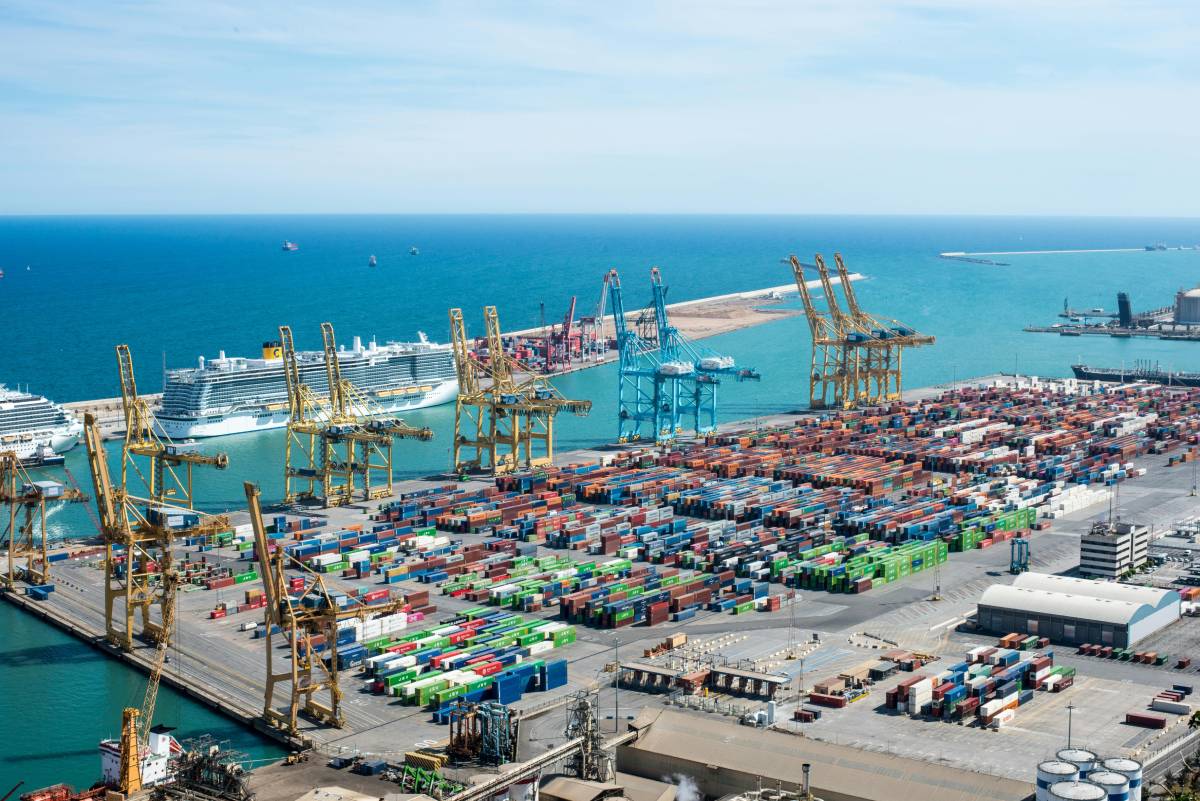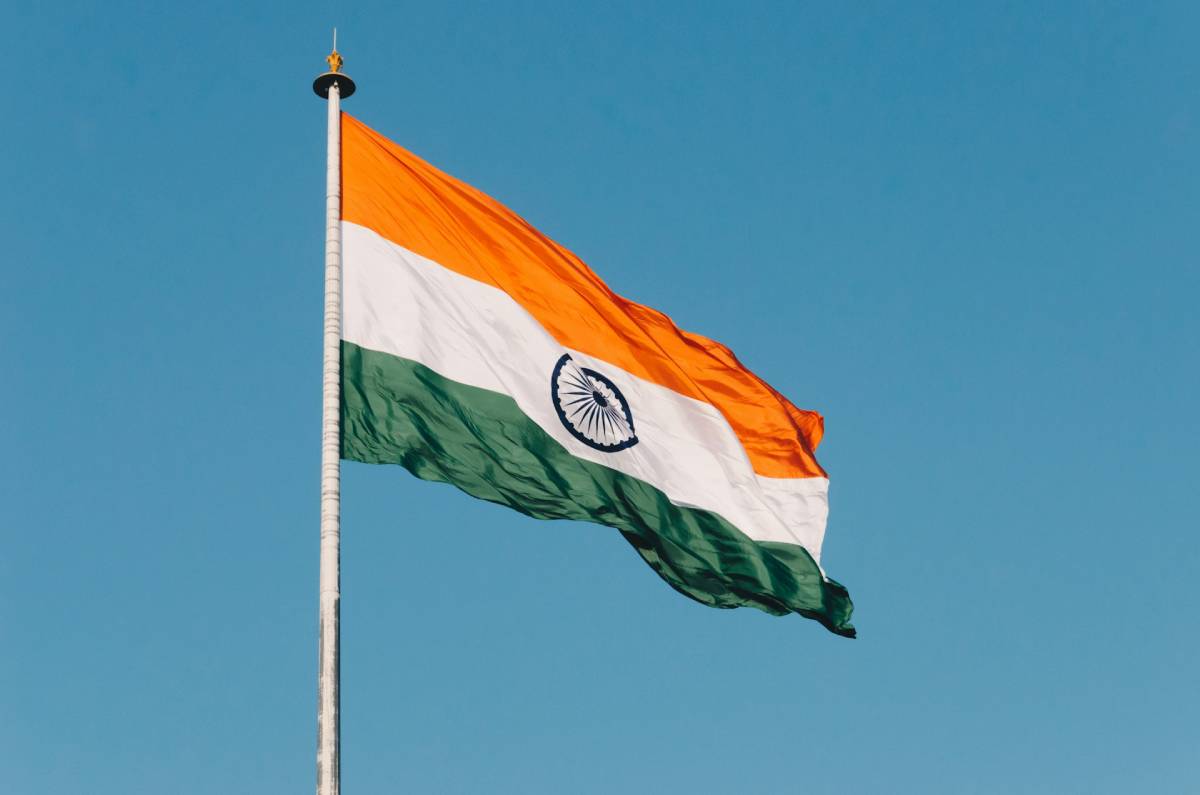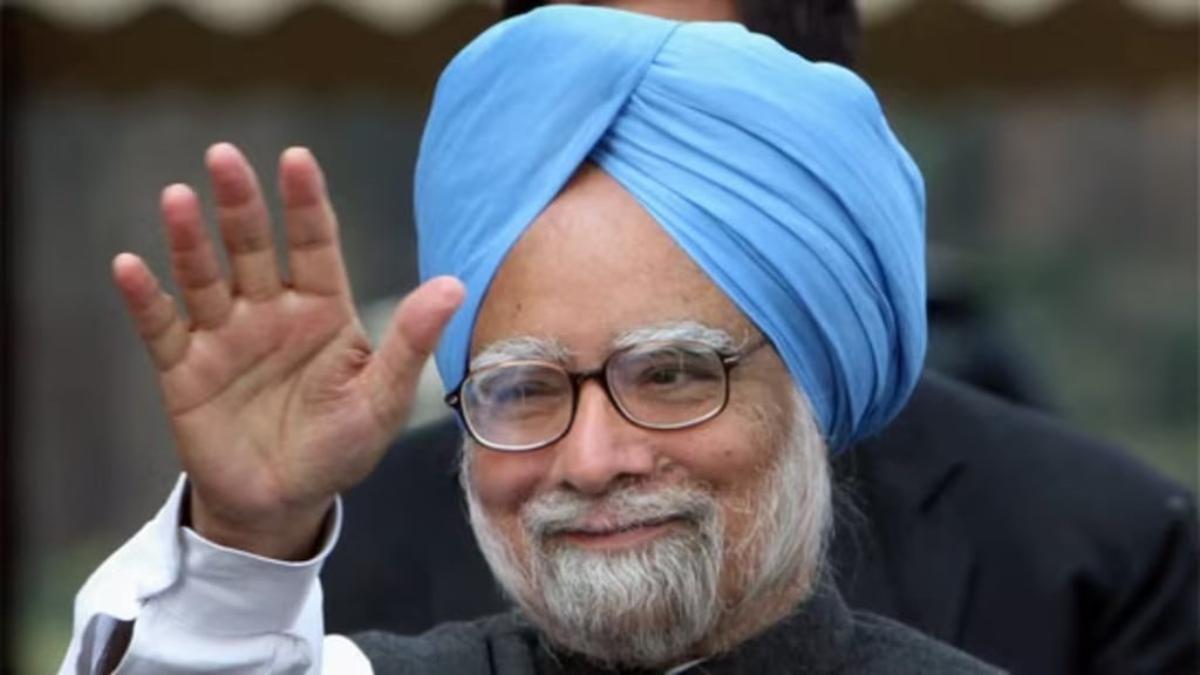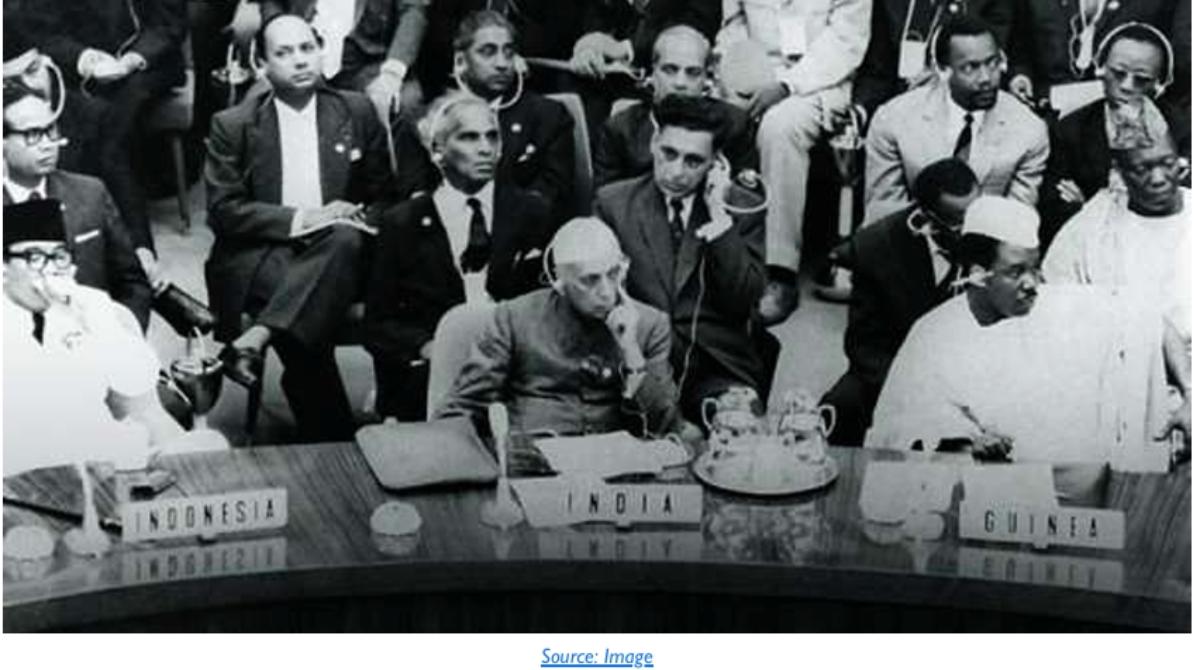The Global Trade Research Initiative (GTRI) has conducted a study to assess the impact of the newly announced U.S. tariffs on India’s merchandise exports. Using detailed trade data and tariff schedules, the analysis estimates that India could see a decline of US$ 5.76 billion, or 6.41%, in exports to the United States
in 2025.
The study evaluates sector-specific exposure, changes in tariff rates, and competitive dynamics involving key players like China, Mexico, and Canada. It also highlights sectors where India may gain or lose ground, offering a nuanced picture of the challenges and opportunities emerging from the revised U.S. tariff regime.
Highlights of findings
The newly announced Trump-era tariffs are expected to deliver a mild blow to India’s merchandise exports to the United States. In 2024, India exported US$ 89.81 billion worth of goods to the U.S. (Trade Data as reported by USA), but these exports could decline by approximately US$ 5.76 billion—a drop of 6.41%—as a result of the new trade measures in 2025.
Several key product groups are likely to see reductions. Exports of fish and crustaceans may fall by 20.2%, iron or steel articles by 18.0%, and diamonds, gold, and related products by 15.3%. Vehicle and parts exports are projected to drop by 12.1%, while electrical, telecom, and electronic products may decline by 12.0%.
Other categories such as plastics and articles thereof (- 9.4%), carpets (-6.3%), petroleum products (-5.2%), organic chemicals (-2.2%), and machinery (-2.0%) are also expected to be negatively impacted. However, there are pockets of opportunity amid the disruption. India could see modest export gains in sectors where the
U.S. has raised tariffs on competing countries. These include textiles made up (4.2%), apparel (3.2%), ceramic products (3.1%), albuminoidal substances, glues, and enzymes (3%), inorganic chemicals (3%), and pharmaceuticals (2.1%).
While the overall effect of the new tariffs’ points toward a decline in trade, India’s competitive position in select product segments may help cushion some of the losses.
India’s Exports face varying tariff levels
The United States has imposed a new tariff regime, with significant implications across sectors. Energy products (including petroleum), pharmaceuticals as well as copper have been exempted from country- specific tariffs. These high- value items account for US$ 20.4 billion, or 22.7% of India’s exports to the U.S.
They will continue to face only the standard MFN (Most Favoured Nation) tariff. Key industrial goods such as steel, aluminium, automobiles, and auto parts—sectors previously targeted by the Trump administration—will continue to be subject to a 25% tariff. These represent US$ 2.2 billion, or 2.5% of India’s total exports to the U.S., with no change to their MFN status. However, the largest impact falls on the remaining basket of goods. These exports—valued at US$ 67.2 billion or 74.8% of total trade—will now be hit with a 26% tariff. While MFN tariffs still apply, this sweeping hike is expected to reshape trade dynamics across a wide range of industries.
Study methodology
To understand how new U.S. tariffs will affect Indian exports, we looked at how much each Indian sector already sells to the U.S. If a sector exports a lot, even a small tariff can hurt. If it exports very little, the overall impact may be small—even with a sharp tariff hike. We also compared the old tariff rates (under the Most Favoured Nation, or MFN, system) with the new, higher rates to see how much extra cost Indian exporters will face.
In addition, we considered how tariffs on other countries—especially China—might change the competitive landscape. If China faces even steeper tariffs, India could gain an edge. But if competitors enjoy lower tariffs, Indian products could lose ground. We also factored in how important the U.S. is for each Indian sector by checking what share of India’s total exports go to America. The more a sector depends on the U.S., the more vulnerable it is to these tariff changes.
On the flip side, we looked which countries dominate U.S. imports. If Mexico or Canada, which enjoy duty-free access under USMCA, are big players in a sector, higher tariffs on India could make its exports less competitive. Putting all this together helped us estimate where Indian exporters are most at risk—and where they might still find opportunity.
Limitation of the assessment
While this assessment provides a structured and data-driven estimate of the impact of new U.S. tariffs on India’s exports, it has several limitations. Most importantly, it assumes that all other factors—such as exchange rates, global demand, supply chain dynamics, non-tariff barriers—and even US tariffs remain constant, which may not hold true in real-world trade scenarios. It also does not account for how quickly Indian exporters can adapt, shift markets, or adjust pricing strategies in response to tariff changes. Moreover, the analysis relies on current trade data, which may not fully capture the complexities of evolving global trade relationships or future policy shifts. Lastly, the presence of long-term contracts or strategic partnerships may buffer or delay the full impact of tariffs, making short-term projections less precise.
Detailed sectoral impact
Electronics and Machinery
India’s exports of electronics and smartphones to the United States reached US$ 14.4 billion in 2024, accounting for a significant 35.8 percent of its global shipments in this category. While the average U.S. Most Favoured Nation (MFN) tariff on these products is just 0.4 percent, Indian goods are now set to face a steep 26.7 percent duty—raising concerns about the competitiveness of its exports in the American market. India currently ranks as the fourth-largest supplier of electronics and smartphones to the U.S., behind China, Mexico, and Vietnam, with a 6.68 percent share.
Despite China’s dominant position—with a 26.15 percent share and a far higher 54.41 percent tariff—Heavy import dependence on imported inputs may reduce competitiveness. Exporters may lose market share, search for new locations. We estimate that the impact of the tariff hike could reduce India’s exports to the U.S.
by 12 percent, or roughly US$ 1.78 billion. For Machinery and mechanical appliances, India’s exports to the USA in year 2024 were US$ 7.1 billion.
Share of the USA in India’s global exports are 21.8%. US average MFN tariffs on this product group were 1.3%. Now Indian product will have to pay 28.6%. Key suppliers and their share in the US imports are Mexico, China, Taiwan and India. Based on the tariffs faced by India and suppliers in the US market, and India’s
presence in low to medium end Goods it is estimated that India’s exports are likely to decrease by 2.0% or by US$ 142.1 million. An improved GVC relationship with China and ASEAN may enhance India’s exports.
Pharmaceuticals
India exported US$ 12.7 billion worth of pharmaceuticals to the United States in 2024, with the U.S. accounting for a commanding 54.5 percent of India’s global drug exports. These shipments continue to benefit from zero tariffs under the U.S. Most Favoured Nation (MFN) regime, and no new duties have been imposed.
India ranks as the fourth-largest pharmaceutical supplier to the U.S., behind Ireland, Switzerland, and Germany, holding a 5.98 percent share. Given that India’s exports are largely composed of generic medicines, the sector is expected to see modest growth—estimated at 2.1 percent, or US$ 267.3 million.
Much of that gain may stem from competitively priced active pharmaceutical ingredients (APIs) sourced from China and Indian manufacturers. Still, the industry remains cautious amid speculation that a future Trump administration could revisit tariff policy.
Gold jewellery and cut and polished diamonds
India exported US$ 11.9 billion worth of gold jewellery and cut and polished diamonds to the United States in 024, with the U.S. accounting for 40 percent of India’s global exports in this category. While the average U.S. Most Favoured Nation (MFN) tariff on these goods was previously 2.1 percent, Indian exports will now face a
steep 30.2 percent tariff. India is the second-largest supplier of these products to the U.S., following Switzerland and ahead of Canada, holding a 13.63 percent share of the market. A large portion of diamond exports are made on a consignment basis, meaning unsold goods are returned to India—lowering the country’s net export value. India may lose market in larger stones. Some processing may shift to Belgium or Thailand. Price-sensitive mechanical jewellery may shift to Europe; premium handcrafted products may hold. Given India’s relatively low value addition in this sector and the heavy new tariffs, exports are projected to fall by 15.3 percent, or roughly US$ 1.82 billion.
Steel and Products
India’s steel exports to the United States are expected to decline sharply in 2024, as new tariffs undercut its competitiveness in a crowded market. India shipped US$ 487.7 million worth of iron and steel to the U.S. last year—just 4.7 percent of its global exports in this category. With tariffs jumping from 0.5 percent to 21.6
percent, Indian exports are projected to fall by 18.3 percent, or US$ 89.3 million. Canada and Mexico, which export duty-free under the USMCA, continue to dominate the U.S. market.
India also exported US$ 2.83 billion worth of steel products, such as pipes and fittings, with the U.S. accounting for over a quarter of its global exports in this segment. Tariffs on these goods have surged from 1.7 percent to 29.3 percent. Despite being the fourth-largest supplier, India lags behind China, Mexico, and
Canada. With China facing even steeper duties but North American neighbours enjoying tariff-free access, India is expected to see a drop of 18 percent in exports—about US$ 509.4 million.
Vehicles and auto parts
India exported US$ 2.8 billion worth of vehicles and auto parts to the United States in 2024, with the U.S. accounting for 12.7 percent of India’s global exports in this category. While the average U.S. tariff under Most Favoured Nation (MFN) terms was just 1 percent, Indian exports will now face a steep 27.4 percent duty. India holds a small share—just 0.72 percent— of the U.S. import market for vehicles and parts, far behind Mexico, Japan, and Canada. Both Mexico and Canada benefit from duty-free access under the USMCA, putting Indian suppliers at a disadvantage. The auto components sector is expected to bear the brunt of the impact, while passenger car exports are already minimal at just US$ 9 million. Overall, India’s exports in this category are projected to fall by 12.1 percent, or roughly US$ 339.4 million.
Chemicals and Petrochemicals
India exported US$ 3.6 billion worth of organic chemicals to the United States in 2024, with the U.S. making up 17.3 percent of India’s global exports in this category. Previously subject to a 4 percent tariff under the U.S. Most Favoured Nation (MFN) system, Indian products will now face a higher 12.4 percent duty.
India is the fourth-largest supplier of organic chemicals to the U.S., behind Ireland, China, and Switzerland, holding a 5.11 percent share of the market. Given the increased tariffs and competition from larger players, India’s exports in this sector are expected to decline by 2.2 percent, or approximately US$ 79.9 million.
India exported US$ 3.2 billion worth of petroleum products to the United States in 2024, representing just 4.3 percent of its global shipments in this category. While the average U.S. tariff under Most Favoured Nation
(MFN) terms was 6.9 percent, Indian exports will now face a higher duty. India holds a small share—1.29 percent—of the U.S. petroleum import market, well behind Canada, Mexico, and Saudi Arabia. Notably, imports from Canada and Mexico enter duty-free under the USMCA trade agreement, giving them a competitive edge. As a result of the tariff hike, high transport cost and stiff competition, India’s exports in this sector are expected to decline by 5.2 percent, or about US$ 167.8 million.
Apparels and Made-Ups
India’s clothing and made up exports to the United States continued to grow in 2024, even as U.S. tariffs surged. The U.S. bought US$ 2.52 billion of India’s non-knitted apparel last year—about 31 percent of India’s global exports in this category. Though tariffs jumped from 10.3 percent to 46.6 percent, Indian exports to the U.S. are still expected to grow by 2.1 percent, or about US$ 52.9 million, helped by lower costs and shifting sourcing away from countries like China and Vietnam.
Knitted apparel exports from India to the U.S. also rose. India shipped US$ 2.41 billion worth, making up 32 percent of its global exports in this category. Despite a tariff hike from 13.9 percent to 53.8 percent, exports are projected to increase by 3.2 percent, or US$ 77.2 million. Textile Made Up exports, including home furnishings, totalled US$ 3.1 billion in 2024. The U.S. now imposes a 44 percent duty, up from 9 percent. Even so, India remains the second-largest textile supplier to the U.S. after China, and is expected to boost exports by 4.2 percent, or US$ 130.2 million. Indian products remain competitive as rival exporters like China and Pakistan face even higher tariffs.
Small Industry sectors
India exported US$ 475.3 million worth of paper, paperboard, and related articles to the United States in 2024, with the U.S. accounting for 18.1percent of India’s global exports in this category. These products previously entered the U.S. duty-free under Most Favoured Nation (MFN) terms but will now face a 25.9
percent tariff. India is a relatively small player in the U.S. market, holding a 2.29 percent share, compared to top suppliers like Canada, China, and Mexico. With Canadian and Mexican goods enjoying preferential access under the USMCA agreement, Indian exports are expected to decline by 7.2 percent, or about US$
34.2 million.
India exported US$ 457.7 million worth of footwear to the United States in 2024, with the U.S. making up 18.3 percent of India’s global footwear exports. Previously subject to an average tariff of 8.8 percent under Most Favoured Nation (MFN) terms, Indian products will now face a significantly higher 43.5 percent duty. Despite
the increase, India is expected to see a modest rise in exports, thanks to its competitive edge over top suppliers like China, Vietnam, and Indonesia. India currently holds a small 1.61 percent share of the U.S. market, but exports are projected to grow by 3.1 percent, or about US$ 14.2 million. India exported US$ 396.9 million worth of tools, cutlery, and kitchenware to the United States in 2024, with the U.S. accounting for 34.4 percent of India’s global exports in this category. These products previously faced an average tariff of 4.1 percent under Most Favoured Nation (MFN) terms but will now be subject to a 34.2 percent duty. India is the third-largest supplier to the U.S. in this segment, after China and Taiwan, holding a 6.15 percent market share. Despite the tariff hike, India is expected to see a modest boost in exports—up 2.1 percent, or about US$ 8.3 million—due to shifting sourcing patterns and competitive pricing.
India exported US$ 351.4 million worth of glass and glassware to the United States in 2024, with the U.S. accounting for 30.9 percent of India’s global exports in this category. These products previously faced a 5 percent tariff under Most Favoured Nation (MFN) terms but will now be subject to a 36 percent duty. India
holds a modest 3.59 percent share of the U.S. import market, trailing behind China, Mexico, and Germany. Given the higher tariff and strong competition, India’s glass exports to the U.S. are projected to decline by 2.2 percent, or about US$ 7.7 million.
India exported US$ 324.1 million worth of ceramic products to the United States in 2024, with the U.S. making up 11.8 percent of India’s global exports in this category. These goods previously faced a 7.3 percent tariff under Most Favoured Nation (MFN) terms but will now be subject to a 40.7 percent duty. India is the fourth-largest supplier to the U.S. ceramic market, behind China, Mexico, and Italy, holding a 3.98 percent share. Despite the sharp tariff increase, India’s exports are expected to grow by 3 percent, or about US$ 9.7 million, due to competitive pricing and shifts in global sourcing.
India exported US$ 157.3 million worth of printed books, newspapers, and other printed materials to the United States in 2024, with the U.S. accounting for 36.8 percent of India’s global exports in this category. These products previously entered the U.S. duty-free but will now face a modest 1.8 percent tariff. India is a relatively small player in the U.S. market, holding a 2.82 percent share, behind China, Canada, and Mexico. Despite the new tariff, India’s exports in this segment are expected to grow slightly—by 1.2 percent, or around US$ 1.9 million—due to continued demand and competitive pricing.
Agriculture and Marine Products
India’s seafood exports to the United States are expected to take a sharp hit in 2024, following the introduction of steep new tariffs. The U.S. imported US$ 2 billion worth of Indian frozen fish and shrimp last year, making up nearly a third of India’s global exports in this category. These products, which previously entered duty-free, now face a 26 percent tariff. India, the third-largest seafood supplier to the U.S. after Canada and Chile, is projected to lose ground. Exports are expected to fall by 20.2 percent—or US$ 404.3 million—especially as Canadian products remain tariff-free under the USMCA trade pact.
Processed meat and fish products are also affected. India exported US$ 585.2 million of these goods to the U.S. in 2024, accounting for nearly 79 percent of its global exports in this segment. With tariffs rising from 2.6 percent to 31.2 percent, India—currently the fourth-largest supplier—is expected to see exports fall by 14.2
percent, or about US$ 83.1 million. Competition from countries like Canada, Thailand, and Indonesia is likely to intensify.
India exported US$ 460.8 million worth of coffee, tea, mate, and spices to the United States in 2024, with the U.S. accounting for 8.7 percent of India’s global exports in this category. These products previously faced a minimal 0.2 percent tariff under Most Favoured Nation (MFN) terms but will now be subject to a much higher 26.4 percent duty. India holds a modest 3.94 percent share of the U.S. import market, behind major suppliers like Brazil, Colombia, and Switzerland. With the new tariff in place, India’s exports in this segment are expected to fall by 13.5 percent, or roughly US$ 62.2 million.
India exported US$ 427.4 million worth of cereals—mainly rice—to the United States in 2024, with the U.S. accounting for just 3.5 percent of India’s global cereal exports. These products previously faced an average tariff of 10.7 percent under Most Favoured Nation (MFN) terms but will now be subject to a steep 47.4 percent
duty. India is the third-largest supplier of cereals to the U.S., behind Canada and Thailand, holding a 12.85 percent market share. India’s competitors like Thailand face higher tariffs. US domestic rice might become more attractive. With competitors like Canada enjoying better trade terms, India’s exports are expected to
decline by 12.3 percent, or about US$ 52.6 million.
Annex I-Key Data- Top sectors
| Impact of Trump Tariffs on Indian Exports-Top sectors | ||||||||
| S.No | Product Group | US
Imports from India (US$ million, 2024) |
Share ofUSA in India’s exports (%) | Impact of tariffs on India’s exports to USA (%) | Change in Exports- due to impact oftariffs (US$
million) |
US MFN
weighted average tariff on India(%) |
Tariffs payable byIndia starting April 9 (MFN+
New) (%) |
ShareoftopSuppliersand IndiainUSGlobalimports |
| 1 | Fish and crustaceans | 2001.6 | 32.6 | -20.2 | -404.3 | 0.0 | 26.0 | Canada(16.16%),Chile
(15.02%),India(9.52%) |
| 2 | Petroleum products | 3227.7 | 4.3 | -5.2 | -167.8 | 6.9 | 13.8 | Canada(52.16%),Mexico
(6.71%),SaudiArabia(4.26%), India(1.29%) |
| 3 | Organic chemicals | 3630.7 | 17.3 | -2.2 | -79.9 | 4.0 | 12.4 | Ireland(36.11%),China
(12.58%),Switzerland (6.46%),India(5.11%) |
| 4 | Pharmaceuticals | 12726.6 | 54.5 | 2.1 | 267.3 | 0.0 | 0.0 | Ireland(23.66%),Switzerland
(8.94%),Germany(8.10%), India(5.98%) |
| 5 | Plastics and articles | 1358.7 | 16.8 | -9.4 | -127.7 | 4.4 | 31.7 | China(27.51%),Canada
(18.13%),Mexico(10.52%), India(1.74%) |
| 6 | Rubber and articles | 1064.1 | 21.9 | -5.3 | -56.4 | 2.0 | 29.9 | Thailand(15.16%),Mexico
(13.04%),Canada(8.68%), India(2.93%) |
| 7 | Carpets | 1288.0 | 62.8 | -6.3 | -81.1 | 2.9 | 31.8 | India(35.48%),Turkey
(24.23%),China(12.88%) |
| 8 | Apparel; knittedor crocheted | 2411.9 | 32.1 | 3.2 | 77.2 | 13.9 | 53.8 | China(22.45%),Vietnam
(17.99%),Cambodia(5.90%), India(5.09%) |
| 9 | Apparel;notknittedor crocheted | 2521.2 | 30.7 | 2.1 | 52.9 | 10.3 | 46.6 | China(21.36%),Vietnam
(18.73%),Bangladesh (13.15%) |
| 10 | Textiles, made up | 3100.8 | 51.3 | 4.2 | 130.2 | 9.0 | 44.0 | China(51.78%),India
(17.14%),Pakistan(8.70%) |
Courtsy: The Global Trade Research Initiative (GTRI)







